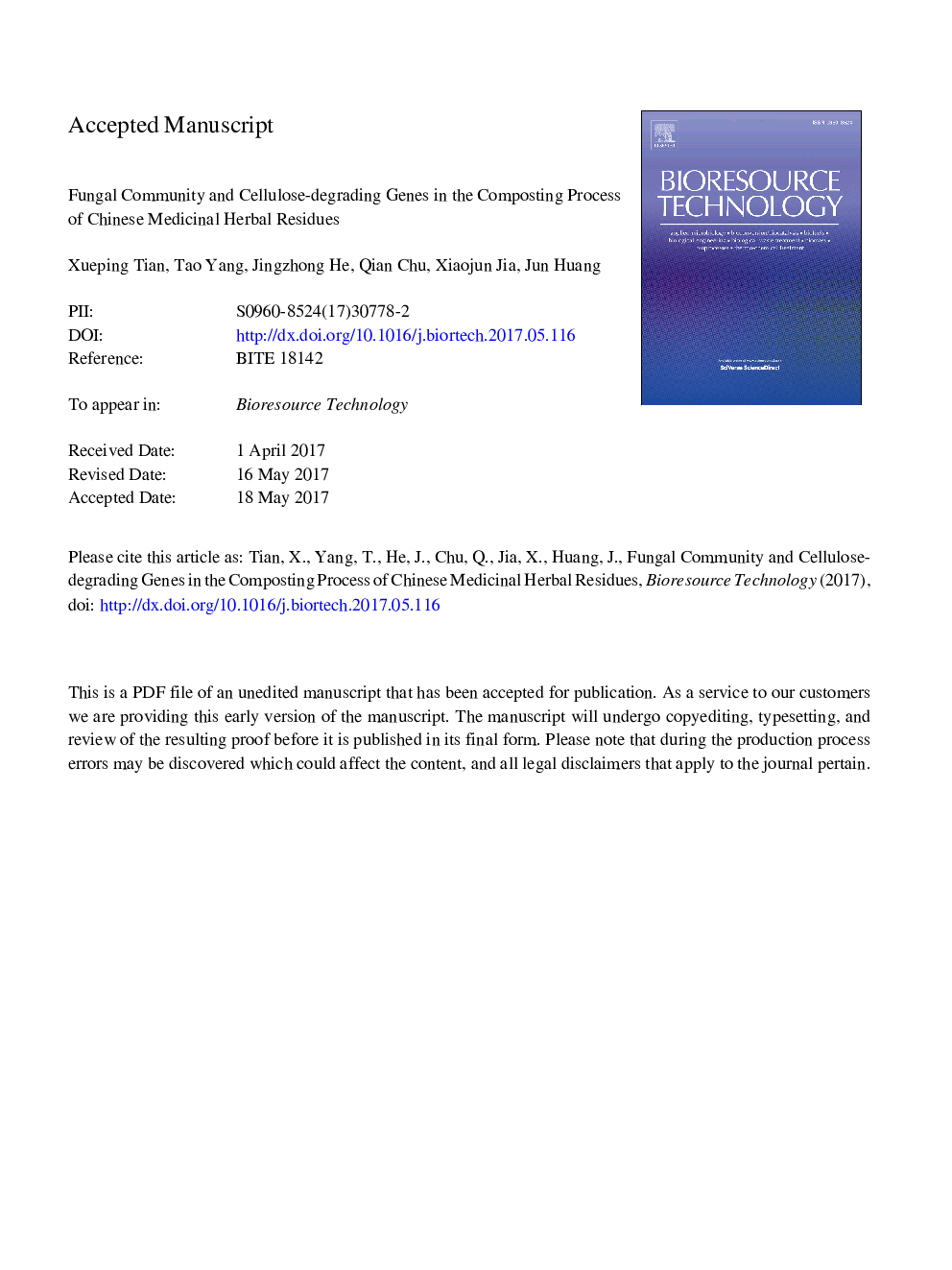| کد مقاله | کد نشریه | سال انتشار | مقاله انگلیسی | نسخه تمام متن |
|---|---|---|---|---|
| 4997078 | 1459902 | 2017 | 37 صفحه PDF | دانلود رایگان |
عنوان انگلیسی مقاله ISI
Fungal community and cellulose-degrading genes in the composting process of Chinese medicinal herbal residues
ترجمه فارسی عنوان
جامعه قارچی و ژن های سلولز تجزیه کننده در روند کمپوست از باقیماندن گیاهان دارویی چینی
دانلود مقاله + سفارش ترجمه
دانلود مقاله ISI انگلیسی
رایگان برای ایرانیان
موضوعات مرتبط
مهندسی و علوم پایه
مهندسی شیمی
تکنولوژی و شیمی فرآیندی
چکیده انگلیسی
The fungal community and the population of 16S rRNA, 18S rRNA and cellulose-degrading genes during the 30-day composting process of Chinese medicinal herbal residues were investigated using Illumina MiSeq and quantitative real-time PCR. An obvious succession of fungal communities occurred during the composting process. Unidentified fungi predominated in the raw materials. As composting progressed, Ascomycota became the most dominant phylum, with Aspergillus being the most dominant genus, and Aspergillus fumigatus making up 99.65% of that genus. Because of the inoculation of cellulolytic fungi in the mature stage, the cellulose degradation rate in inoculation groups was faster and the relative abundances of Aspergillus and the glycoside hydrolase family 7 genes were significantly higher than those in the control groups. These indicated that the fungal inoculants facilitated the degradation of cellulose, increased cellulolytic fungi and optimized the community structure.
ناشر
Database: Elsevier - ScienceDirect (ساینس دایرکت)
Journal: Bioresource Technology - Volume 241, October 2017, Pages 374-383
Journal: Bioresource Technology - Volume 241, October 2017, Pages 374-383
نویسندگان
Xueping Tian, Tao Yang, Jingzhong He, Qian Chu, Xiaojun Jia, Jun Huang,
